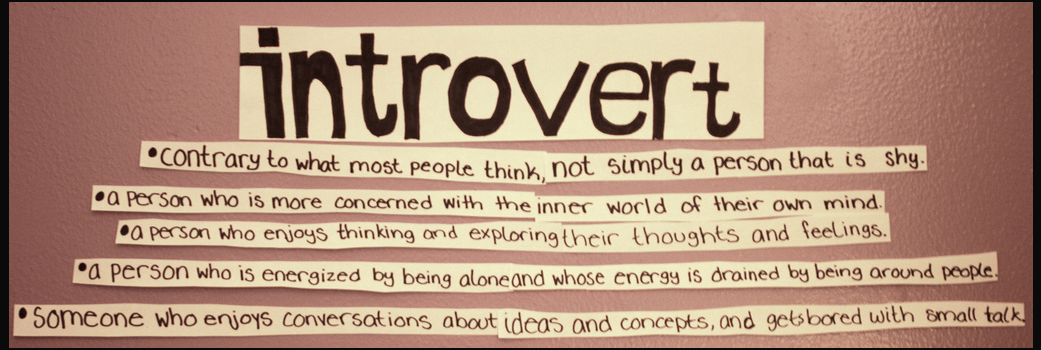Leveraging Introversion in Networks for Change
January 12, 2016 4 Comments“Love is essential, gregariousness is optional.”
-Susan Cain

Image by Tom May (www.flickr.com/photos/sleepyhammer/13877245315/sizes/c/)
The following is a slightly edited re-post of something I wrote in early 2014. Since writing this, I continue to see the need to be vigilant around not privileging extroversion in groups, to provide more opportunities to tap a range of cognitive styles to leverage fuller potential in networks.
Having read Susan Cain’s book Quiet: The Power of Introverts in a World That Won’t Stop Talking, I feel both validated (as someone of more introverted tendencies as the years pass) and able to see with new eyes. IMHO, the book is well worth the read, and if the thought of tackling the 300 pages is daunting, you might enjoy a taste via Cain’s TED Talk.
Here I want to reflect on some of the insights Cain’s work has to offer collaboration and “net work” for change. Essentially, Cain reminds us of an important element of diversity that we should not overlook in our change efforts – different cognitive processing styles and ways of responding to social stimulation.
First of all, what is introversion? Introversion is not shyness or asocial behavior. People who are introverted can certainly be shy or socially awkward, but introversion is first and foremost a response to social stimulation. Relative to those who are more extroverted, those who are introverted prefer less stimulation and tend to work more slowly and deliberately. Introversion tends to favor intimacy, listening, and some time alone.

According to Susan Cain’s assessment of the research, one third to one half of people in this country are introverted, while many can display extroverted tendencies. Well-known introverts include the likes of Mahatma Gandhi, Eleanor Roosevelt, Albert Einstein, Rosa Parks, Pablo Picasso, and Steve Wozniak.
“There’s zero correlation between being the best talker and having the best ideas.”
In a fascinating historical review, Cain traces a mainstream cultural trend in the United States that shifted preference from what she calls “the culture of character” to “a culture of personality,” where public performance and gregariousness became equated with success and strong leadership (think Dale Carnegie and his books How to Win Friends and Influence People and Public Speaking and Influencing Men in Business). To this day, in many workplaces, schools, and families, Cain suggests that there is a preference for extroverted ways of thinking and being. This flies in the face of data suggesting that introverted styles can equate with stronger academic performance and deeper knowledge in given fields.
And yet there continue to be significant shifts toward open concept workplaces and group-oriented classrooms that privilege extroversion and create painful experiences for those who are more introverted, not allowing them to shine or bring their gifts to the relatively raucous table. The result is that we risk losing the gifts and talents of “quiet leadership” and creativity.

So what to do, especially in collective change efforts? A few thoughts:
- Pay attention to who speaks and does not speak up in meetings/groups and don’t immediately assume that the quiet people are aloof or uncaring.
- Think carefully before opening physical spaces and group processes too much or too often. Introversion thrives in settings where there is more personal space and opportunity to reflect alone and in small groups.
- Understand that brainstorming as it is often done (in person and through whole group discussion from the get-go) privileges extroversion, and that research shows it leads less to innovation and more to group bonding (not a bad thing). Make space for people to work and think alone before bringing a group and their ideas together.
- Leverage social media and virtual collaborative platforms as a way of helping to maintain autonomy and avenues for creativity that can fuel innovation and allow introversion to shine.
- Create space for “parallel play” and cooperation, as opposed whole group collaboration (see Harold Jarche – “In networks, cooperation trumps collaboration“).
- Embrace the power of quiet for everyone through space for writing, mindfulness, and other kinds of restorative practice.
Curious to hear any reactions and additions to these.
I will end with this important reminder from the introverted Mahatma Gandhi:
“In a gentle way you can shake the world.”


4 Comments
One strategy I have incorporated is related to discontinuous feedback loops. Some of the most thoughtful and remarkable observations and recommendations I’ve received (about process, direction and strategies) have come from my “White Paper” strategy. Participants can take notes on a blank sheet during a meeting- with questions and observations- turn it in before leaving. Then I follow up with them- and ask questions/ask for suggestions. Some people require more time to process events. They may well be the most quiet, but they are often keen observers, on multiple levels, and they think deeply about many aspects. Providing asynchronous feedback opportunities has been a means to accept their substantial gifts
Thanks, Sandy. I really appreciate your comment about some people needing more time to process things and making room for asynchronous feedback. Another reason why I have concerns about the culture of rushing forward.
Best,
Curtis
I wrote this article in 2012 after reading an article about Susan Cain. http://tutormentor.blogspot.com/2012/05/avengers-leadership-teams-introverts.html
I think we need to find ways to encourage more people to dig deeply into the information available on the Internet, and in libraries, so we find more ways to solve complex problems facing the world.
Thanks, Daniel. I especially appreciate the comment in your post about the importance and power of learning to be with our own thoughts, and to “dig deeply.”
Curtis